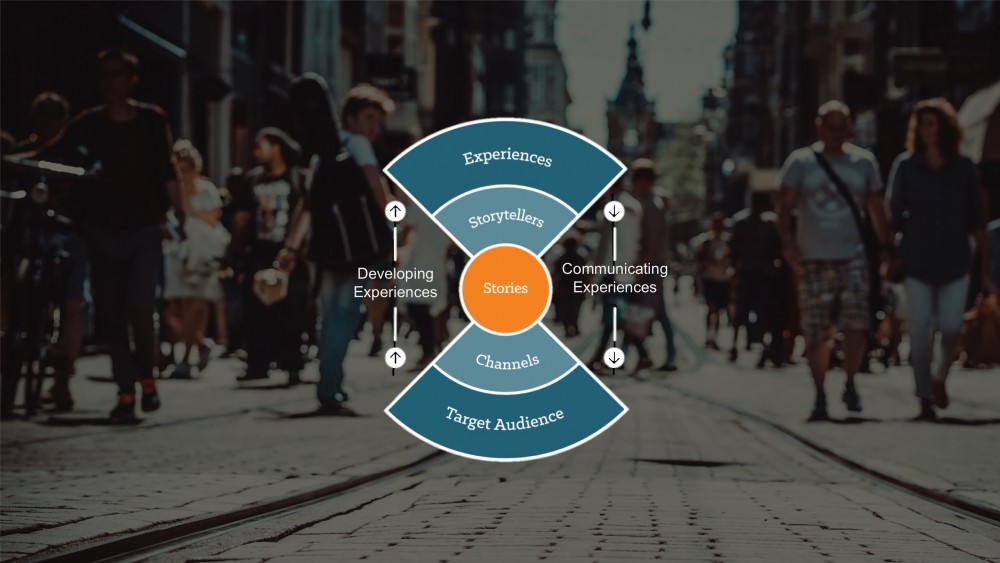The destination marketing world is changing as consumers use technology to share their experiences online through word of mouth, and organizations are trying to adjust to the shift. This 2003 quote from Harvard Business Review remains relevant today: “…the only path to profitable growth may lie in its ability to get its loyal customers to become, in effect, its marketing department.” How can destination marketing organizations (DMOs) handle the changes both at a strategic and organization level?
At Simpleview Summit 2016, William Bakker, Chief Strategist and Partner at Destination Think gave a talk entitled “The Global Destination Marketing Snapshot” that highlighted key issues, best practices and international case studies demonstrating how destinations are making the shift to digital-first marketing.
We’ve outlined the core concepts here, or you can watch the full 50-minute presentation below.
Limited offer: Join our exclusive initiative to measure the power of word of mouth for your destination.
Destination marketing then and now
In a comparison of survey data from 1983 to today, word-of-mouth recommendations stood out as the most important factor affecting decisions to travel. Destination advertising is less important, while the importance of referrals has grown. Simply put, if 100 people visit your destination and 110 come back, you’re growing.
So there are clearly opportunities. In a recent study of more than 327 destination marketing organizations, Destination Marketing Association International (DMAI)’s DestinationNEXT report identified three major strategic challenges for a DMO:
- Dealing with the new marketplace with a shift from broadcast to consumer engagement
- Building and protecting the destination brand
- Evolving the DMO business model through collaboration and partnerships
DMOs around the world are responding to these challenges by exploring how they can best shape the story of their destination.

Destination Think’s strategic model for destination marketing
Destination marketing requires honest storytelling
Destination Think uses a strategic model that places stories at the core of destination marketing. Now that every traveller is a storyteller and there are more channels to share stories with than ever before, DMOs have different concerns. How can you ensure that your target audience knows about your experiences? Or, how can you make your experiences more relevant to that target audience with the aim of generating better word-of-mouth promotion?
Destinations must be honest with their storytelling and branding. A destination’s brand is the sum of all stories somebody hears about a destination plus the sum of all experiences they have during a trip. These create a personal perception in the visitor. The DMO doesn’t create the brand, visitors do, which means that destinations must work to understand their place’s DNA.
Understanding the visitor and the customer journey is essential
Using DNA to match the visitor experience with the messaging around it will ensure authenticity. Since visitors tell stories that shape perceptions about your destination, honesty in advertising is critical. In one example, Visit Cleveland recently rebranded and mobilized locals to help shift perceptions of its city. Cleveland understood that a destination’s story flows from its DNA. Destination marketers need to study and understand theirs.
Once you understand that story, consumer research is an important next step. One effective approach to bring a target audience to life is by creating personas – visitors with names, hobbies, jobs, addresses, kids and more – in an effort to truly understand how they interact with your destination. Then, by mapping them through a customer journey, destinations can imagine how personas would respond to each phase of their trip in terms of actions and emotions.
Personas, and the customer journey they take, reveal the path to purchase. By determining pain points along the way, DMOs can decide where focus is needed. They may also find opportunities to improve the visitor experience itself.
An improved visitor experience may require a better experience for residents as well. Many European cities face the challenges of mass tourism as they try to find a way for visitors to coexist with residents. In Barcelona, overcrowding raises concerns that historic districts are being overrun with visitors, driving longtime residents away. Destinations must balance between managing the experience in a sustainable way for business and for the health of the destination.

William Bakker – Chief Strategist & Partner, Destination Think
DMOs are collaborators first
In order to manage the destination experience, today’s DMOs need to engage their operators. Design thinking provides a collaborative approach that helps identify personas, customer journeys and solutions that improve the visitor experience. Working together encourages operators to shape their services to reflect the larger story of their destination.
One common challenge is that many tourism operators are small businesses that don’t know much about social media or content marketing. This creates an opportunity for industry education.
To facilitate learning well beyond a one-off or series of training sessions (after which many businesses return to their daily grind and may lose steam), Visit Sørlandet developed Arena Usus as a collaborative arena to continue the conversation beyond a workshops and into implementation. Destination BC has also done this on a province-wide level, which has resulted in the development of new products that solve visitor problems and improve experiences.
Communication must provide value to the visitor
Operators and DMOs must also change the way they communicate. They must transition from outbound marketing approaches, which asks, “How many people can we reach?”, to become inbound marketers, which seeks to engage people in conversations and add value to their lives. As Jay Baer has said, “Make your marketing so useful people would pay for it.”
The stories shared by today’s DMOs are just drops in the bucket, so managing others’ stories is just as important as managing your own. Today’s storytellers include influencers, residents, industry, trade, visitors and more. Visit Amsterdam encourages advocacy and sharing through its “I amsterdam” sign (a great example of “socialgenic” branding), which has become one of the most popular tourism attractions in the city. On an average day, 8,000 people take a photo of the sign and half of them post it on social media. This creates a reach of around 1.4 million people and generates many conversations that would otherwise not have happened.
Despite massive changes to the industry landscape, word of mouth is still at the core of why people travel to certain places. The good news is that there are countless opportunities (and tools) for DMOs to explore that will help them collaborate, improve experiences and share the stories of visitors as they become a destination’s most important marketers.
Watch William Bakker’s full presentation above to learn from more examples from around the world, including Nashville; Rovaniemi, Finland; RTO4 and Visit Flanders.










0 Comments